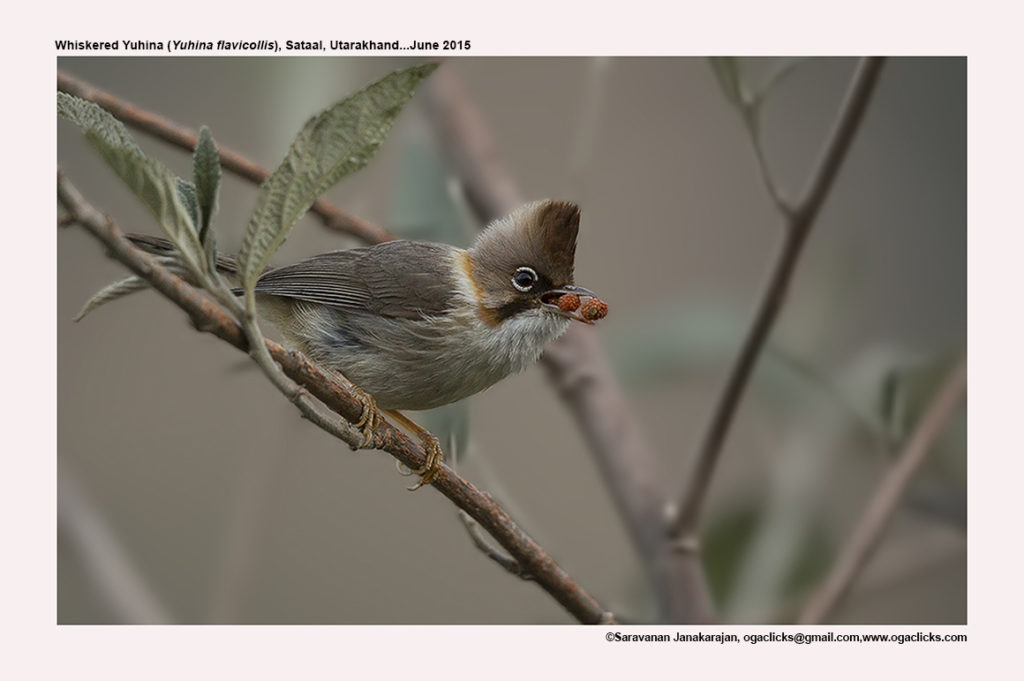Whiskered Yuhina

Whiskered Yuhina Yuhina flavicollis
Etymology:
- Yuhina : Named after “Yuhinof the Nipalese”
- Flavicollis: Latin word flavus- golden-yellow; collis-necked { Golden necked}
Vernacular Names: Lepcha: Srip-chong-pho
Distribution in India:Resident of Himalayas and North Eastern Hillsin India.
Description:
Size 12–13·5 cm; wt. of 10–19 g. It is a mid-sized Yuhina with grey head and crest, golden-yellow hind collar, black moustache and yellowish-white underside. The nominate race has elongate and erectile brown crown feathers, lateral feathers behind eye, including supercilium are pale greyish brown, upper nape is pale brownish grey, lower nape and neck side are rufous, shading to golden-yellow on hindneck, and fading into yellowish-grey-tinged olive-brown on upperparts. The upperwing and tail are darker brown; lores are blackish brown, this colour rising over eye and linking below with blackish-brown submoustachial stripe broken near bill base. The ear-coverts are slightly glossy silvery brown; chin and throat are white with narrow brown shaft streaks, breast is washed yellow with narrow brown shaft streaks, belly is washed yellow, breast side and flanks are dull buffish olive-brown with long white streaks, vent as flanks but without streaks. The iris is red-brown to dark brown, prominent broad white orbital ring broken at front and rear; upper mandible horn-brown to dark brown, lower mandible is flesh or pinkish brown to steely greyish; legs are yellowish to fleshy-brown. Both the sexes are similar. The juvenile lacks streaking below and colour of nuchal collar is indistinct.
Habitat: It is found in bush layer and lower storeys of montane broadleaf evergreen forest, oak and open deciduous forest, and secondary growth. It is found from 1400 m–3000m and descending in winter to 500 m.
Food habits: It eats beetles, wasps and other insects, berries, flower nectar,seeds and sugar-rich sap from bark.It is usually found in small parties, often in association with mixed feeding flocks which may contain other small babblers. It forages in taller bushes and lower branches of trees, sometimes low down.
Breeding habits: They breed in Apr–Jun. The nest is built by both sexes. The nest is a well-made cup mostly of moss, with rootlets, bits of leaves and bracken, thickly lined with rootlets and moss roots, suspended between twigs, or placed among moss on branch, or on bank among roots or tufts of grass. They lay a clutch of 2–4 eggs. The incubation is done by both sexes. The incubation period is for 13–14 days. The young are provisioned by both sexes.